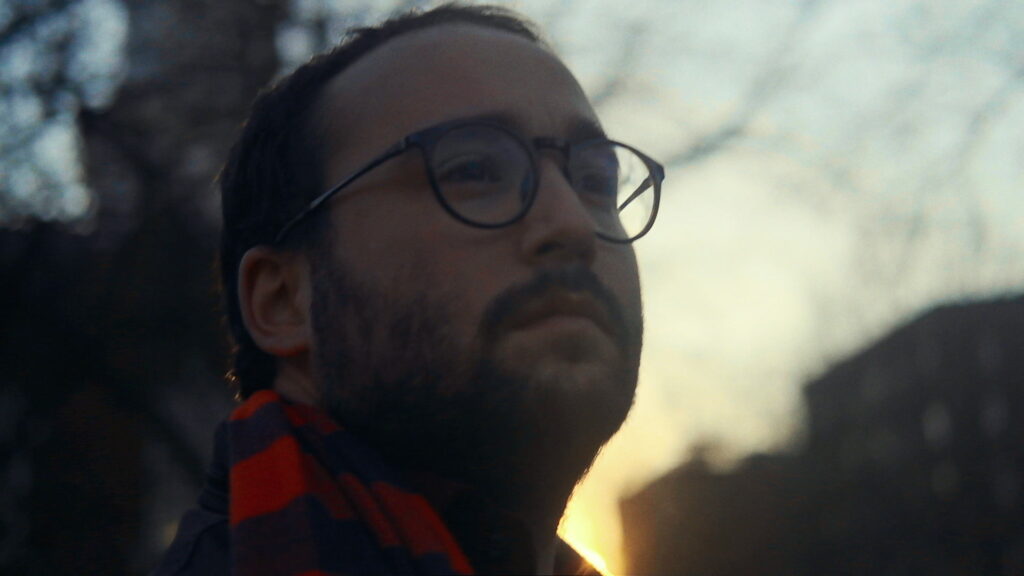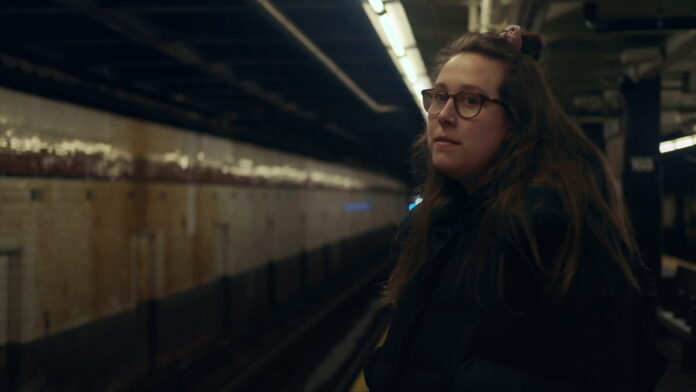Writer/director Miki Katoni’s heartfelt documentary “Queer and Frum” screens on Nov. 12 at the Weitzman National Museum of American Jewish History, as part of the Jewish Shorts program in this year’s Philadelphia Jewish Film and Media festival. This 30-minute short recounts two fascinating stories about queer (ex)-Orthodox Jews. (Frum means devout).
Chaim Levin is first seen talking about the irony of having to read from Leviticus as his torah portion at his Bar Mitzvah. He also discusses the shame he felt during puberty and how he was sent to JONAH, a conversion therapy organization where he suffered abuse, emotional manipulation and trauma. He eventually was a plaintiff in a suit against JONAH for fraud.
The other story has Lieb (Lieba in the film) Swartz-Brownstein choosing to become a member of the Orthodox community because they wanted to experience a sense of belonging and be loved. While they had same-sex feelings, Lieb pushed those thoughts away, hoping to get married to a man. Eventually, they came out and found a girlfriend.
Katoni uses interviews, photographs, journal entries, and archive footage as well as commentaries by Rabbi Avi Shafran and Jewish Queer Youth Founder (JQY) Mordechai Levovitz to provide context and perspectives regarding how members of the Jewish community who are both gay and Orthodox are seen in society.
The filmmaker spoke with PGN about his compassionate short film.
How did you find these two subjects and decide to tell their stories?
A friend sent me an article about gay Orthodox Jews being forced out of Yeshiva in Israel. I started doing research and I found Chaim’s story and thought, “This is extraordinary.” I reached out to him and got access to him to tell his story, but the more I spoke to people in the space, they felt women’s stories weren’t being fully acknowledged as well. Most of the coverage was on Jewish Orthodox men. I connected with activists and JQY. I was then connected to Lieb and saw footage of them; they had just come out. Rabbi Shafran publicly wrote about the issue, so it made sense to interview him and get his perspective and document him as well.
What can you say about how you approached telling the film?
It was happenstance and circumstantial. Chaim gave us access to a recording of his bar mitzvah. Lieb gave us access to their journal entries, which were beneficial in telling their story. You could go inside their mind and see what they were feeling and contemplating at the time. We got access to depositions and transcripts. It took a lot of work and thinking to determine how to compile it together.
What observations do you have about the experiences Chaim and Lieb shared in the film? They live double lives, which are both specific, but also universal.
I felt empathy and compassion and heartbreak hearing their stories that people within a larger Jewish community are experiencing these things. I am coming to it from a place of ignorance because I’m not orthodox or queer. I [felt] these stories should be told. Chaim is part of a generation being sent to a conversion therapy program. His larger point is the root of the issue — trying to change something that can’t be changed. Lieb’s story showed that issue in a more current setting. Lieb was trying to change; they were the root and the essence of what Chaim was saying still persists today.
The film shows the damage conversion therapy causes and that it is a fraudulent, harmful practice. Was part of your reasoning for making this film to create awareness about this?
I was not making this film in an activist framework to create exposure and have a call to action. It was in a journalistic context. It was to show these issues and represent stories as well as showing the other side of it. I hope it brings awareness and creates more dialogue. It is important to speak about it, but I want the activists, stakeholders and survivors of these experiences to fully expand on their stories.
What are your thoughts about Rabbi Shafran’s remarks? He is explaining that control, not change, is possible, and indicates that gays cannot be fully accepted as part of the observant community. He floats what sounds like a “don’t ask, don’t tell” position on queer Orthodox Jews.
I respected his willingness to tell how he and parts of his community see the issue in a respectful manner that wasn’t inherently aggressive. He knew that I [was] a reform Jew, and he could read between the lines about what my beliefs and views are. From a journalistic standpoint, it was important to understand how he and others in the community think about the issue. It validated what Chaim says about how people in that space think. Chaim says it, and then you hear Shafran say it, so there is truth to that.
I was glad you featured the important work JQY does. Can you talk about this safe space since so much of the Orthodox community looks down on queer Jews?
I think they are incredible. Mordechai and Rachel, the director, do amazing work. The percentage of their intake of people who have suicidal tendencies or ideation is nearly 75%. If it weren’t for JQY’s intervention, you would see a larger percentage who would commit suicide. They deserve a ton of credit. They are saving lives.
Both Chaim and Lieb have exited Orthodoxy, but they still struggle to find peace from time to time. What do you think making this film and its impact as well as the catharsis of getting to tell their story and help others?
It’s hard to speak for them. They have extraordinary stories and are extraordinary individuals. They both deserve a platform, and my hope is this film accurately represented their stories to use as a base in their activism. They deserve to be heard within an Orthodox context, and this film provides nuance and context to start those conversations.
“Queer and Frum,” screens 7:30 p.m. on Nov. 12 at the Weitzman National Museum of American Jewish History, 101 S Independence Mall E. For tickets and more information, visit https://phillyjfm.org/event/jewish-shorts-2023/

